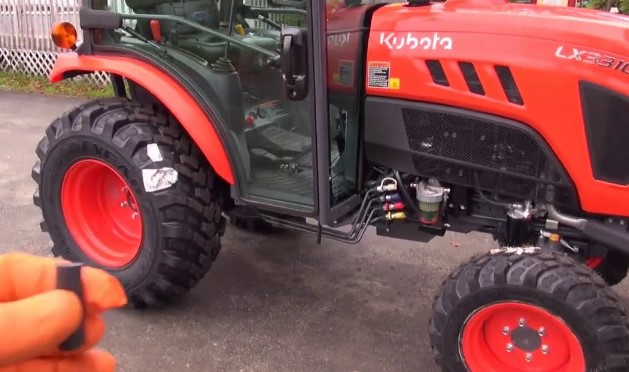Having a Kubota Lx3310 can be a great source of pride and joy. Unfortunately, it can also come with its own set of problems. Whether you're dealing with minor issues or major ones, understanding the best strategies for solving Kubota Lx3310 problems can help you get back to enjoying your machine. This comprehensive guide provides all the answers you need today to ensure your Kubota Lx3310 runs as smoothly as possible.
Solving Kubota Lx3310 Problems: An Essential Guide
Troubleshooting the Kubota Lx3310 can be a daunting task. But with the right information and a few tips, you can find the solution to any issue you encounter. From minor repairs to major overhauls, this guide provides a comprehensive overview of how to identify and address the most common Kubota Lx3310 problems. Learn how to diagnose issues, select the right parts, and take the necessary steps to keep your machine running smoothly.
| Problem | Diagnosis | Solution |
|---|---|---|
| Engine won't start | Check fuel delivery and spark plug connections | Replace fuel filter, spark plug, or starter |
| Transmission is slipping | Inspect fluid levels and condition | Replace fluid and filter, or adjust bands |
| Steering is stiff | Check power steering fluid and hoses | Replace power steering fluid, or adjust linkage |
Noise Problems
Kubota Lx3310 owners often encounter noise issues, including rattling, squealing, and tapping. These noises can sometimes indicate an underlying problem, such as a loose belt or an issue with the engine, transmission, or differential. If left unattended, these problems can worsen and lead to more significant damage. To prevent further harm, owners should inspect their machines and pinpoint the source of the noise.
Engine Overheating
The Kubota Lx3310 is known for its powerful engine, but it can also be prone to overheating. If the engine temperature rises too high, it can cause serious damage. To mitigate this risk, owners should regularly check their coolant levels and perform routine maintenance checks. Additionally, they should ensure the air intake is clear of debris and the radiator fins are clean.
Tire Issues
Tire-related problems are common with the Kubota Lx3310. Poor tire alignment or incorrect tire pressure can cause uneven wear and reduced traction. To prevent this, owners should routinely check the tire pressure, alignment, and treads. Additionally, they should inspect the tires for signs of damage or wear. Taking these steps can help ensure the Kubota Lx3310 runs safely and efficiently.
Key Takeaways for Solving Kubota Lx3310 Problems
- Understand the most common Kubota Lx3310 problems and how to identify them
- Diagnose issues by checking fuel delivery and spark plug connections, inspecting fluid levels and condition, and checking power steering fluid and hoses
- Take steps to prevent engine overheating and tire-related issues by regularly checking coolant levels, performing routine maintenance checks, ensuring the air intake is clear, checking tire pressure, alignment, and treads, and inspecting tires for damage or wear
- Listen for noise problems, such as rattling, squealing, and tapping, and take steps to identify and address the source of the noise to prevent further harm
Making the Most of Kubota Lx3310 Ownership
Owning a Kubota Lx3310 can be a rewarding experience, but it also comes with responsibilities. To ensure the machine runs safely and efficiently and to prevent costly repairs, owners should be familiar with the most common problems and understand how to identify and address them. Regular maintenance, such as checking coolant levels, performing routine checks, and inspecting tires, can help prevent engine overheating and tire-related issues. Additionally, owners should listen for noise problems and take steps to identify and address the source of the noise to prevent further harm. Taking these steps can help Kubota Lx3310 owners make the most of their ownership experience and enjoy their machine for years to come.
